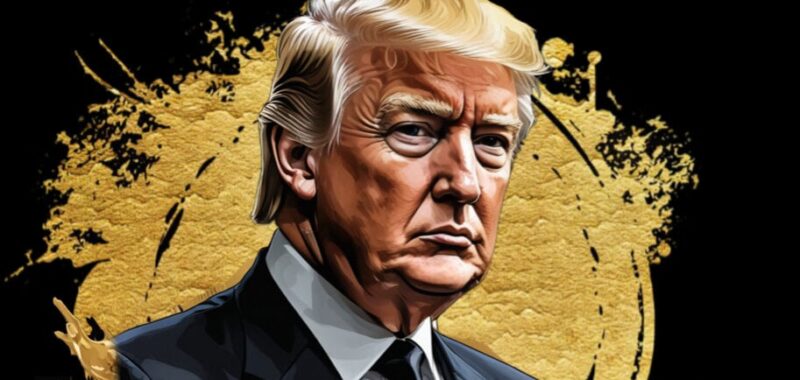Donald Trump’s controversial crypto project, World Liberty Financial—which recently raised $14 million in an initial token sale—has plans to create and issue its own stablecoin, sources familiar with the matter told Decrypt.
The stablecoin, a type of cryptocurrency designed to hold a steady value that is often pegged to the U.S. dollar, is still in development and could take some time to launch. The World Liberty team is still determining how to make the financial product safe before bringing it to market, one source said.
Meanwhile, the team is working concurrently on major project components for World Liberty Financial, including the stablecoin, to ensure such features are ready to launch at the right moment, another source said.
Recent moves by World Liberty foreshadowed a potential stablecoin venture. Earlier this month, the project announced that Rich Teo, co-founder of stablecoin issuer Paxos, will serve as World Liberty’s stablecoin and payment lead.
Teo did not respond to Decrypt’s request for comment on this story. Representatives for World Liberty Financial declined comment.
While World Liberty has already attracted attention, and controversy, for its plans to launch an Ethereum-based borrowing and lending platform directly associated with the former—and potentially future—president, the prospect of Trump and his business partners issuing their own stablecoin would likely bring with it both substantially heightened risks and the chance to reap even greater rewards.
Stablecoins are a crucial element of the crypto ecosystem. They allow crypto traders to park their funds in digital assets built to remain fixed at one price, even when the crypto market fluctuates. They also function as dollar equivalents in markets where dollars are restricted or inaccessible, serving as key on- and off-ramps between crypto and traditional financial markets.
To remain true to their name, stablecoins must be heavily collateralized. The top U.S.-based stablecoin issuer, Circle, says it currently holds $34.59 billion worth of dollar-denominated assets at regulated American financial institutions to back the $34.37 billion worth of its stablecoin, USDC, currently in circulation.
Other stablecoin projects have tried to circumvent such methods of fiat collateralization, often by using crypto as backing. Most notably, crypto company Terra attempted to peg its UST stablecoin to the U.S. dollar with an algorithm tied to another in-house crypto token. The gambit worked for over a year, until UST’s price collapsed to zero in May 2022, wiping out some $60 billion in value and devastating the broader crypto market.
The legality of stablecoins remains contested in the United States. The U.S. Securities and Exchange Commission (SEC) has previously sued companies like Binance for issuing stablecoins, claiming the tokens constitute illegal, unregistered securities offerings. Those stablecoin-related charges against Binance, however, were dismissed by a federal judge earlier this summer.
Several prominent federal lawmakers have signaled their intention to vote on legislation regarding stablecoins in the next year—potentially setting up the remarkable scenario in which Trump, if re-elected, would control the White House as Congress determined the legality of a financial product his business partners intend to offer.
For all that potential legal and regulatory strife, stablecoins could offer the World Liberty team immense profits. Similar to banks, stablecoin issuers rake in cash by reinvesting customer deposits in yield-bearing products like U.S. Treasury bills. Tether, the company behind the market’s leading stablecoin, USDT, reported a record $5.2 billion in profit in the first half of 2024 alone. The British Virgin Islands-based company currently holds nearly $81 billion in T-bills.
Revenue generated from stablecoins could help boost World Liberty’s future plans, but issuing a new stablecoin in an already crowded field is no easy task. Such a venture would require brokering deals with the industry’s leading crypto exchanges, such as Coinbase and Binance, to make the asset available to a broad base of users. Binance currently has a “strategic commercial partnership” with First Digital Labs, issuer of the fifth-largest stablecoin by market capitalization, FDUSD. Coinbase co-issues USDC, the second largest, along with Circle.
If Trump were re-elected, however, he would gain a uniquely powerful negotiating position with those exchanges: Binance and Coinbase are both currently the targets of protracted SEC lawsuits threatening their ability to operate.
Trump also has connections to the world’s top stablecoin issuer. Tether relies on Wall Street asset manager Cantor Fitzgerald to custody “many, many” of its assets in reserve, according to Cantor CEO Howard Lutnick. Lutnick currently co-chairs Trump’s transition team.
Getting a collateralized stablecoin off the ground would also require a large amount of capital. World Liberty Financial, which launched sales of a governance token earlier this month, has so far managed to offload just $14.24 million worth of tokens, according to data from Dune. That’s a paltry 4.7% of the $300 million worth of tokens the project had earmarked for public sale.
Nevertheless, World Liberty Financial plans to leverage the Trump brand to emerge as the go-to service for retail investors looking to enter the often opaque world of crypto trading and DeFi. The project has previously framed its mission as one to “make crypto and America great again by driving the mass adoption of stablecoins and decentralized finance.”
Though Trump and his crypto allies have eagerly espoused the benefits of stablecoins in recent months, they have also railed against the dangers of an American central bank digital currency (CBDC)—effectively, a stablecoin issued by the U.S. government. The former president has repeatedly vowed to outlaw the creation of a CBDC if re-elected.
“Such a currency would give the federal government—our government—the absolute control over your money,” Trump said during a campaign event in New Hampshire earlier this year.
“They could take your money,” he added. “You wouldn’t even know it was gone.”

